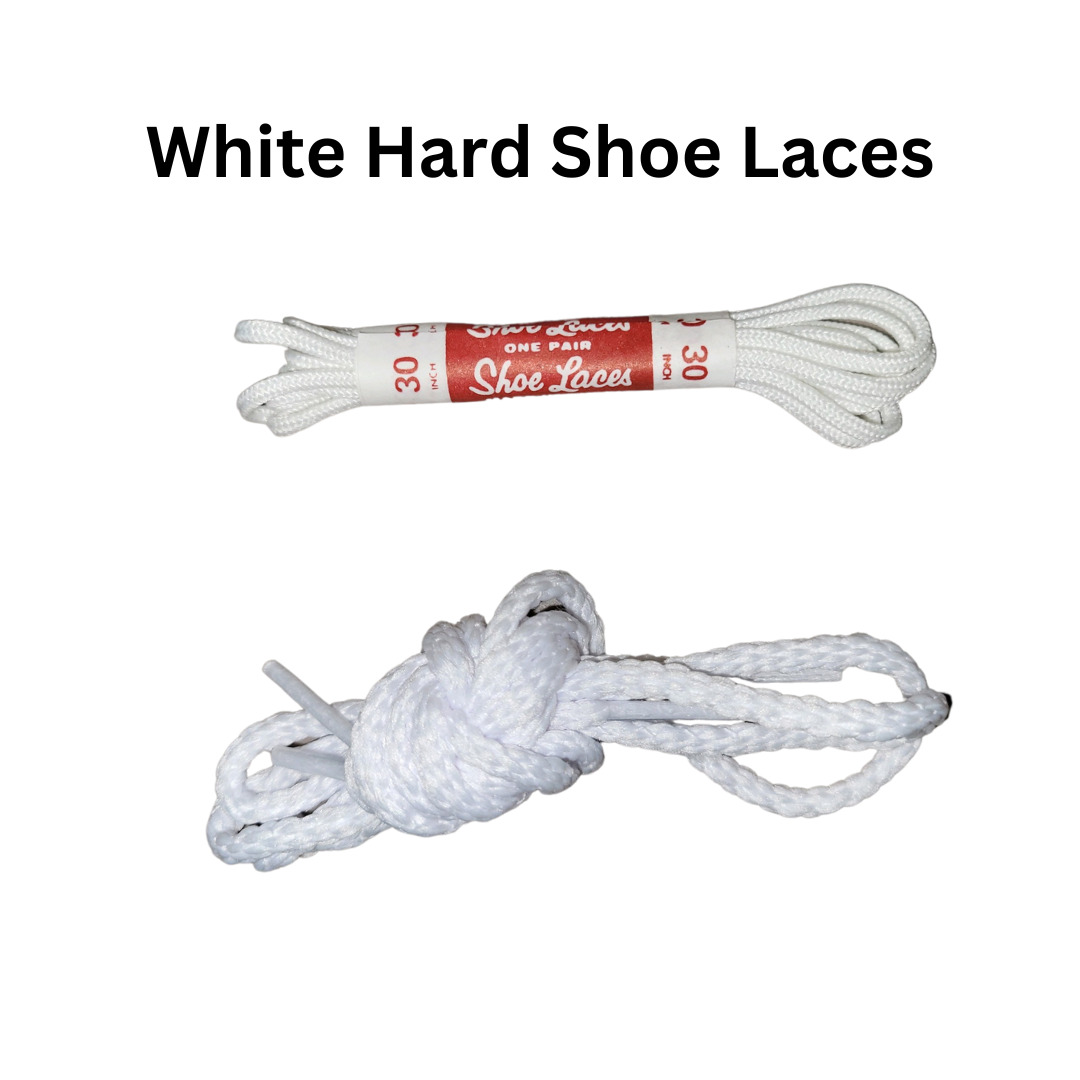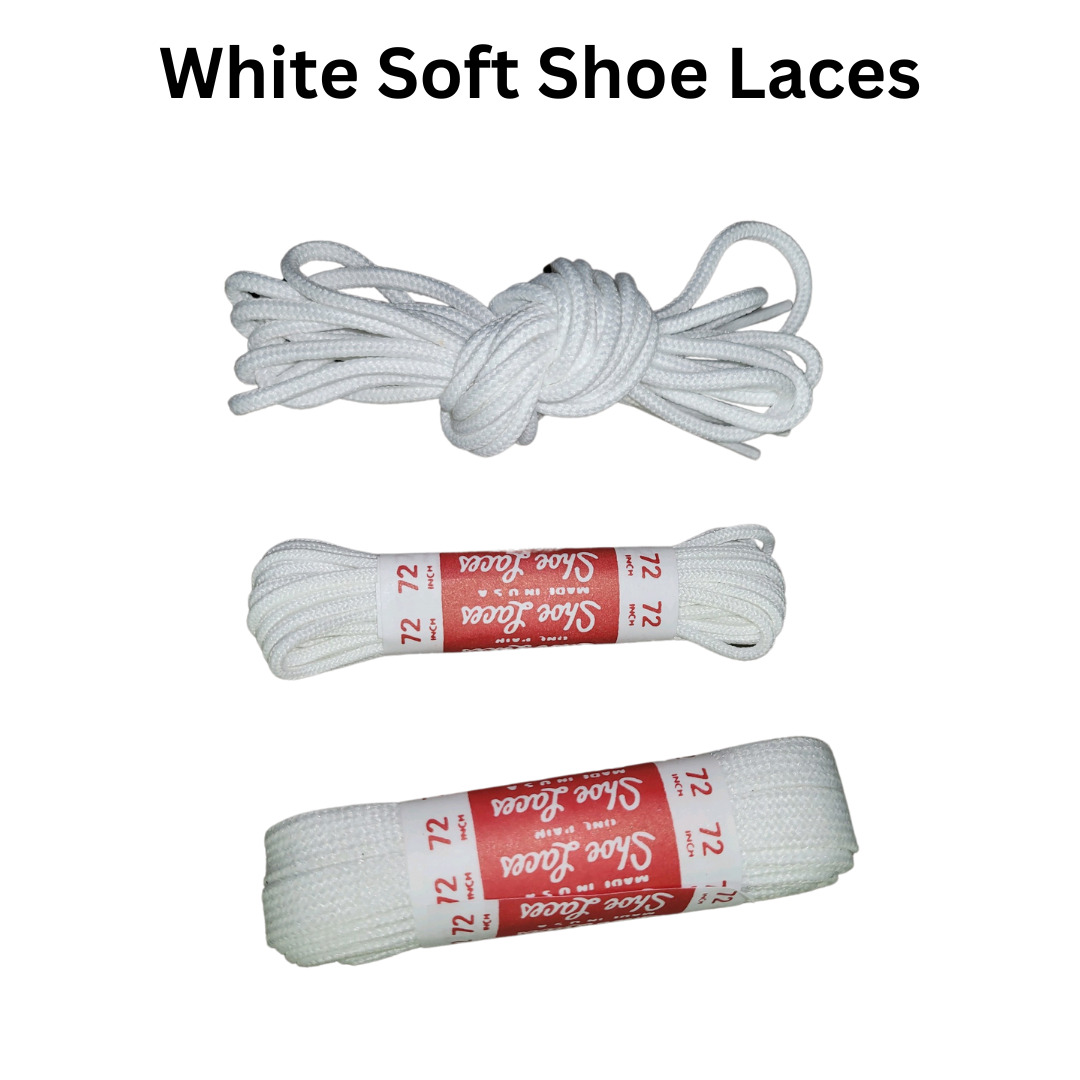Shoelaces are the kind of thing you normally never have to put much thought into- they come with the shoe and you only have to replace them if they break, which almost never happens, right? This can make it a bit surprising to see vendors carrying whole displays of replacement laces for Irish dance shoes, and even more so when there are so many different types available.
The laces of Irish dance shoes go through a lot more than most laces. Not only do they get put under a lot more pressure during dances, but they can also end up getting cut when dancers are removing tape from their shoes or worn through by buckles. Also, if a dancer’s laces get discolored it can be quite noticeable, so white laces especially can end up becoming unusable for Irish dance surprisingly quickly. Because of this, people have to buy replacements pretty frequently. It’s counter-intuitive, but we at Irish Seams usually bring hundreds of each type of shoelace we sell to every feis, and we sell out pretty frequently.
So Irish dance shoelaces are clearly something people want to buy and buy often. Thankfully, you don’t have to just settle with a one-size-fits-all option. Irish dance is a sport built on the little details and personal touches, so we carry a variety of different lace options so that you can find one that works best for your situation.
But what are these varieties, and what are the differences between them? And which laces go with which shoes? Below is a list of the different lengths of shoelaces we carry and some tips for using them.


30-Inch Laces
Most hard shoes- as well as boys’ soft shoes or reel shoes- use 30-inch laces… with one exception that we’ll talk about in a bit. These laces come in a thick variety from Pacelli’s that is easier to tie, especially for younger dancers, and a thinner variety that is easier to thread through shoebuckles. The thin variety is sold wrapped in a red paper band, and the thick variety is sold tied in a knot.

54-Inch Laces
Gavins are a special form of hardshoe sold by Fays that have a few differences from the traditional formula. One of them is that the Gavins have their shoelaces go around the heel of the shoe like they do on ghillies. Because of this, Gavins use 54 inch laces. So far we only sell these in the thin variety. For dancers with feet in the smaller sizes, especially those who wear dance shoes smaller than Youth 13, we have found that Gavin laces sometimes fit better than the full 72-inch ones.


72-Inch Laces
72-inch laces are used in all types of ghillies. This length can often lead to there being a lot of excess lace once you’ve done them up, and there are a few different things dancers like to do with that excess. One popular choice is to wrap the extra lace around the arch of the foot, in a place the dancer won’t be putting weight on it. Other dancers wrap it around their ankles. Either is fine as long as the result is neat and there aren’t any loops of shoelace hanging out. Be sure not to wrap them too tight, however, as that can lead to serious problems. You want the wrap to be snug, not strangling.
Soft shoe laces come in three varieties. The first is a thin lace sold in a red paper band, exactly like the hard shoe laces. The second is Pacelli’s round soft shoe laces which are slightly thicker, have slightly longer plastic aglets on the ends, and are sold tied in knots. The third is Pacelli’s flat soft shoe laces, which have the same longer aglet and lie a bit differently on the foot, as well as also being sold tied in a knot.
Colors
All of our shoelaces come in black and white. Some people say white laces make the dancer’s feet look longer, some don’t. Normally you can use whichever color you prefer, but blackout feis require black shoelaces. Among those who prefer white shoelaces, the Pacelli varieties are more popular because they are a bright, sharper white- the banded ones are more of an eggshell white.
How To Tie Your Irish Dance Shoelaces
It doesn’t really matter how you tie your shoelaces… as long as it is neat, uses all of the shoe’s eyelets, tightens the shoe properly, and is the same on both feet. Some dancers prefer to hide the bow on their shoes by tucking it away, but as long as it’s not big and distracting it does not really matter. If you find your shoes are gapping on the sides, try a different way of lacing to correct that. Normally crossing over the foot eliminates gapping.
Shoe buckles
Shoe buckles, especially blinged shoe buckles, can do a lot to draw attention to your dancer’s feet, but they do cause more wear on the laces. It’s also worth checking to see if the metal bar the laces weave through is sharp: that can be a problem with some brands and will really lower the lifespan of your laces. Even if it’s not sharp, the extra friction will cause it to wear away at your laces faster than if you didn’t use one. Remember to check your laces for signs of wearing through when you’re putting on your shoes. You should always have a spare pair of shoelaces just in case, but it’s especially important if you have buckles.
And there you go. That’s most of what there is to know about Irish dance shoelaces. If you have any other questions, feel free to drop by our Facebook page and ask us. And if you’re interested in looking for a new pair of Irish dance shoes, why not take a look at our guide for doing so remotely here?
